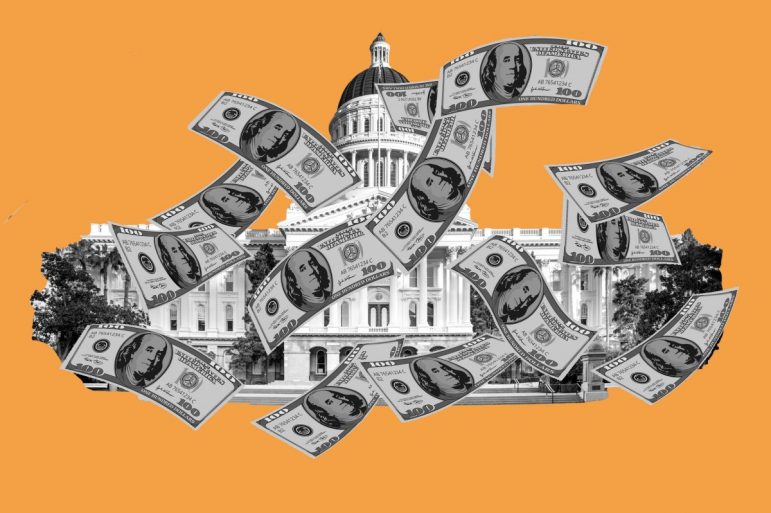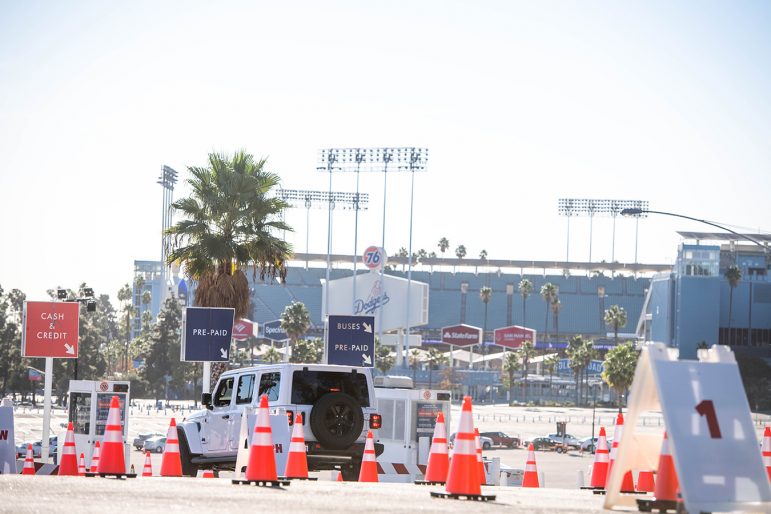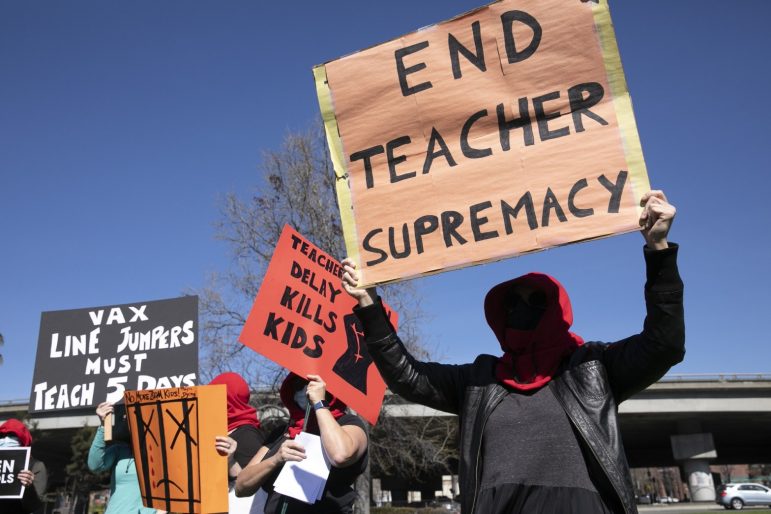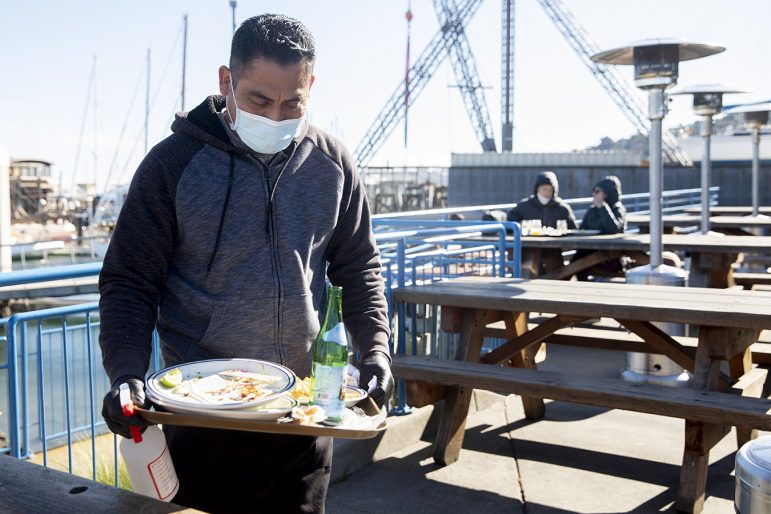Lawmakers, businesses and educators are scrambling to understand California’s latest surprise shift in pandemic strategy, directly tying economic reopening rules to getting more people in low-income communities vaccinated. The changes are technical — involving health index rankings and vaccine targets and case rates required for businesses to reopen — but the practical effect could be speeding up school and business reopenings.
As states like Texas abandon pandemic precautions altogether, Gov. Gavin Newsom is attempting to bounce back from California’s deadliest bout of the virus by incorporating equity in distributing limited vaccine supply in a state where white people are not the majority. The shift also rankled one union-aligned lawmaker who criticized the administration’s timing of the announcement just before passage of a compromise school reopening plan.
Newsom, who appears to be facing a recall, defended the complexities of his administration’s latest change.

“I wish, you know, I was Herman Cain and I had a 9-9-9 plan,” Newsom said Thursday at a news conference in Stockton, referring to the late Republican presidential candidate who ran on a single-sentence tax plan. “It should be complex in a state that happens to be the most diverse state in the world’s most diverse democracy. It requires nuance. It requires specific strategies.”
If it all works, the state’s new reopening approach, which comes just weeks after a $7.6 billion state stimulus deal, could help stabilize the working class, buoy struggling businesses and provide much-needed relief to working parents. But it’s a tricky balancing act that economists say would defy past economic recoveries, which have widened inequality in the state.
Stabilizing businesses, relief to working parents

Under the reopening plan first unveiled by state officials in a secretive late-night phone call on Wednesday, California will redirect 40% of vaccines to areas hit hardest by the virus. Once 2 million vaccines have been distributed in places that rank in the bottom 25% of a statewide Healthy Places Index, the four-level color-coded system that the state uses to set reopening rules will be relaxed slightly, allowing businesses to move faster from the most restrictive purple tier into the next tier, red, that allows for some indoor dining, gyms and other activities. Currently, 40 counties with 35 million people are in the purple tier.
If all goes well, state officials plan to ease requirements for counties to move into least restrictive orange and yellow tiers. Though the rules for which businesses may open in which tier are staying the same for now, Newsom’s top economic adviser Dee Dee Myers said the state could ease rules for outdoor activities in the coming days and evaluate additional changes based on infection and vaccine trends.
“This will give us a chance to start to open those businesses cautiously, allow for more economic activity, bring people back to work, with safety as kind of the North Star,” Myers said.
Pressure to reopen schools
Across the state, school districts scrambled to understand what the combination of the new reopening bill and the changing reopening rules might mean for teachers, parents and students.

Relaxed rules to reach the red tier add pressure to local school districts to physically reopen campuses to older students sooner.
Most counties, if not all, could likely shift to the less-restrictive red tier by an April 1 deadline laid out under the school reopening deal struck by Newsom and the legislative leaders. That means that, in order to get their full share of the $2 billion in incentive funds approved by lawmakers, schools would have to offer some in-person instruction to elementary students and at least one full middle- or high-school grade by the end of the month.
The timing of Newsom’s announcement, which came just hours before the school vote, irked some allies of labor. Assemblywoman Lorena Gonzalez, a San Diego Democrat, called the last-minute change dishonest given that the loosened schedule would force some schools to expand class sizes and increase in-person instruction time.
“So if you get calls from your teachers union a little upset, they have the right to be upset,” Gonzalez said before voting for the bill. “You don’t negotiate a deal and then change the parameters of that deal on the day that we’re voting on it.”
Lawmakers gathered in the morning to vote on an exhaustively negotiated school reopening bill, which passed the Senate, 36-0, and 72-4 in the Assembly, with all no’s coming from Republicans.
Frustration mounts

Though AB 86 passed both chambers with bipartisan support, several lawmakers questioned whether the bill went far enough to ensure all of California’s K-12 students will have an opportunity for in-person instruction this spring. The deal does not require schools to physically reopen and leaves the decision to local boards, superintendents and labor unions. Frustrated parent advocates that have mobilized around the issue called the deal “a failure.”
Sacramento Assemblyman Kevin Kiley, a Republican fresh off the release of new book “Recall Newsom: The Case Against America’s Most Corrupt Governor,” also took the opportunity to mount an attack.
“We are killing our kids for no good reason. Gavin Newsom’s monstrous school closures are among the greatest government crimes of the 21st century,” he said, without providing evidence of that claim.
Half of the state’s 100 largest school districts currently plan to offer some in-person instruction to their students by the first week of April, according to a CalMatters tally. These districts are responsible for educating roughly 3.5 million students.
Six of California’s 10 largest school districts — Long Beach, Capistrano, Elk Grove, Fresno, Corona-Norco and San Juan — will physically reopen for some students by the first week of April or are currently open.
Los Angeles, San Francisco and San Diego remain in negotiations with local unions for in-person returns. The San Bernardino City Unified school board voted in November to remain in distance learning for the rest of the school year.
Businesses scramble — again

Many business groups around the Capitol were still racing to understand what, exactly, the latest reopening plan meant. One early voice calling for clarity was the state’s tourism lobby, which asked for longer-term guidance on events in a letter highlighting the sector’s role bringing in $66 billion in spending the year before the pandemic. In an echo of salons, craft brewers and other industries who have sued over state reopening rules, tourism agencies and hotels that signed onto the letter blamed officials’ lack of precision for hurting business.
“This silence sends a misleading signal that California is closed indefinitely,” wrote the authors of the letter distributed by the California Travel Association. “Other states are exploiting this perception to poach corporate meeting(s) and events that would otherwise take place in California in 2022 and well into the future.”
Some community and labor groups that have been forced to quickly scale up direct services to out-of-work Californians offered tentative support.
In San Jose, Maria Noel Fernandez has cultivated a team of several dozen people working on collaborative efforts to demystify and translate public health guidance for small businesses and their employees. There’s been more reason for optimism lately with more vaccines arriving and talk of jobs coming back.

“There’s desperation for the vaccine, and I think the cutting in line and what’s being seen across the state is very real, but it’s reflective of where we all are: We want to get out of this pandemic,” said Fernandez, director of organizing and civic engagement for labor group at the Partnership for Working Families. “What’s more encouraging is seeing actual clinics opening up in these communities. Action is what gives me hope.”
The biggest challenge for the state, said economist Sarah Bohn, will be juggling the survival of small businesses and increasing hiring with more difficult long-term challenges like closing race and income gaps.
“We can’t just aim at getting back to the unemployment rate before this started,” said Bohn, vice president of research and a senior fellow at the Public Policy Institute of California. “History is kind of against us in an equitable recovery.”